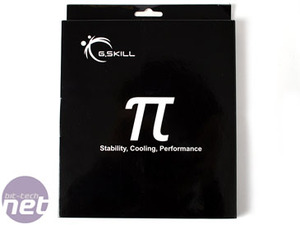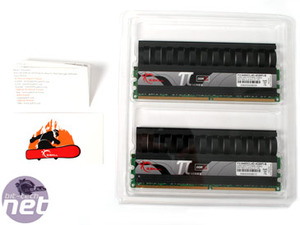Introduction
In the past few weeks, several members of the bit-tech community have claimed that 1,066MHz DDR2 was obviously much faster than very low latency 800MHz DDR2 and it is now the norm. True enough, it does offer more bandwidth, but does a much lower latency offset any performance benefit of the frequency jump?From time to time we read of community tales about trying to achieve stability with 4GB or 8GB of 1,066MHz memory, and we wonder is it really worth the hassle? It's much easier to tune down a CAS to 3 or 4 than it is to overclock the entire memory bus which may entail further voltage changes to the northbridge or voltage references, as well as Clock Skews to really dial in a completely stable system when attempting for 1,066MHz and above.
We've grabbed a performance-value motherboard from Gigabyte - the popular EP45-DS3R - and a set of 4GB G.Skill Pi Black memory at 800MHz CAS-4 and dropped in the usual Intel Core 2 Quad Q9550 and our standard 64-bit benchmarking set to keep the results as comparable to other recent memory numbers as possible.
Which setup is better and is one really worth the effort over the other? Read on to find out!
G.Skill Pi Black Series 4GB 800MHz
Manufacturer: G.SkillUK Price (as reviewed): £56.17 (inc. VAT)
US Price (as reviewed): $69.99 (ex. Tax)
The design is the same as the DDR3 Pi-Series we covered in part one of our DDR3 roundup recently, except these are anodised black instead. To be honest, we think the black is certainly tastier than the silver, but whatever you get it makes no difference to the actual cooling performance.
The heatspreader is obviously taller than simple, plain ones, so on certain motherboards with low slung heatsinks it could come into conflict so check before purchasing. At 50mm, it's only a few millimetres taller than Corsair DHX series for comparison. Unlike some other heatspreaders, the design also allows two sticks to sit next to each other with the fins neatly interlocking. This limits the air going from the top down, but get some airflow across them and the surface area is quite large.
The Pi-Black series does feature Nvidia's EPP, however you wouldn't know it to look on the modules or the box strangely enough. We found that Gigabyte's P45 board even reads the EPP profile too which is a bonus to make use of the slightly performance enhanced 4-4-4-12 timings, rather than the usual 5-5-5-15. At £56 we think these are really good value for a CAS-4 kit rated at just 1.9V, so even very cheap boards can use this because there's very little voltage overhead.
While not a detrimental feature loss, what G.Skill is missing is the colour coordination between the PCB and Pi heatspreaders. If you really care about the package as a whole (and we do because, as modders, style is important to us) having its own PCB in black (or anything other than green) is something only a few other performance memory companies like Corsair and OCZ do. Instead, G.Skill bins the chips to find the performance parts like normal, then simply sticks them all on a single (green) PCB like everyone else making its differentiation just slightly less. On the plus side, G.Skill offers a lifetime warranty, which is certainly much more important and even though it matches the likes of Corsair and OCZ, among others, it's certainly a big plus to know you're completely covered.

MSI MPG Velox 100R Chassis Review
October 14 2021 | 15:04













Want to comment? Please log in.